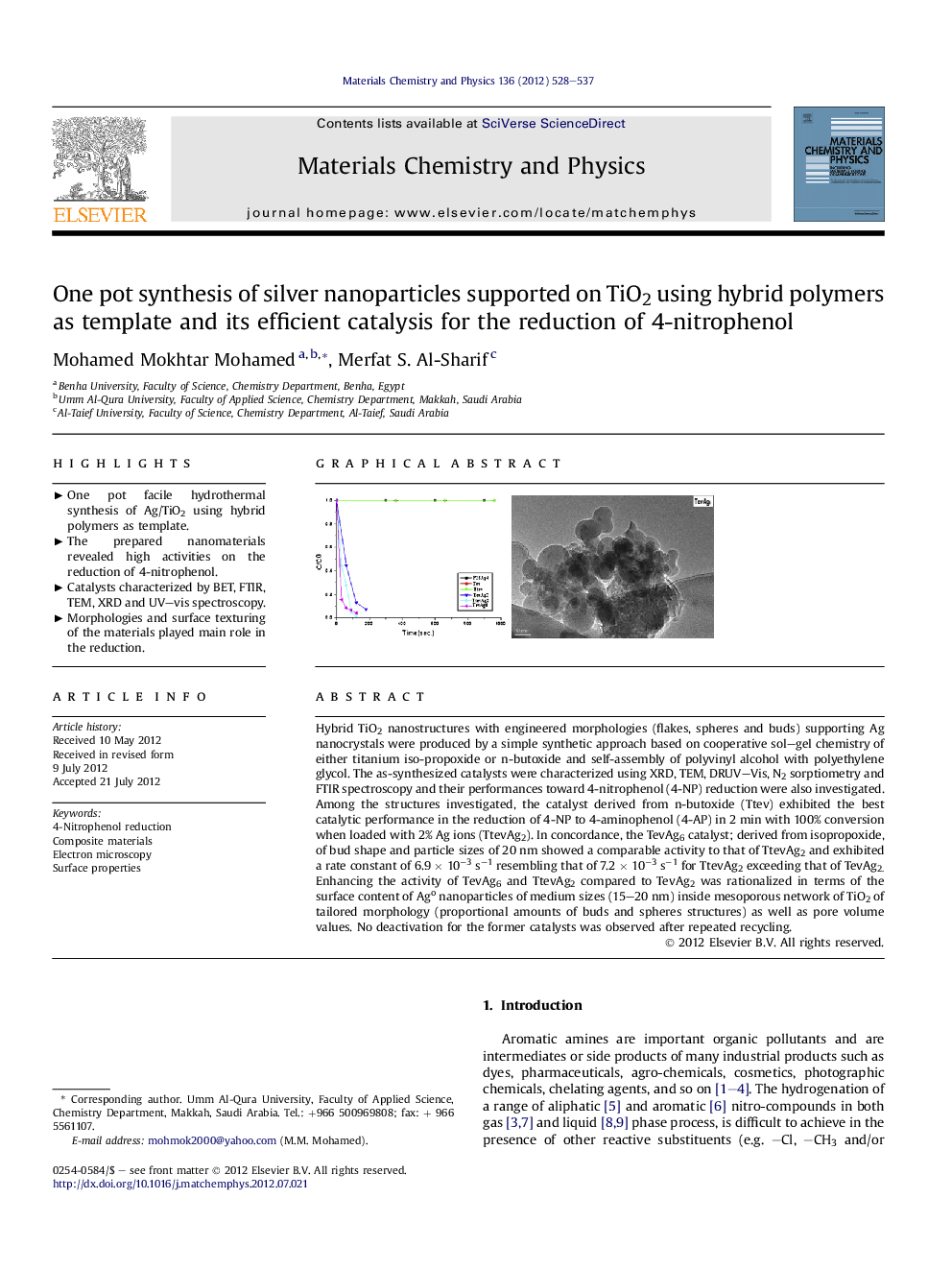| Article ID | Journal | Published Year | Pages | File Type |
|---|---|---|---|---|
| 1524100 | Materials Chemistry and Physics | 2012 | 10 Pages |
Hybrid TiO2 nanostructures with engineered morphologies (flakes, spheres and buds) supporting Ag nanocrystals were produced by a simple synthetic approach based on cooperative sol–gel chemistry of either titanium iso-propoxide or n-butoxide and self-assembly of polyvinyl alcohol with polyethylene glycol. The as-synthesized catalysts were characterized using XRD, TEM, DRUV–Vis, N2 sorptiometry and FTIR spectroscopy and their performances toward 4-nitrophenol (4-NP) reduction were also investigated. Among the structures investigated, the catalyst derived from n-butoxide (Ttev) exhibited the best catalytic performance in the reduction of 4-NP to 4-aminophenol (4-AP) in 2 min with 100% conversion when loaded with 2% Ag ions (TtevAg2). In concordance, the TevAg6 catalyst; derived from isopropoxide, of bud shape and particle sizes of 20 nm showed a comparable activity to that of TtevAg2 and exhibited a rate constant of 6.9 × 10−3 s−1 resembling that of 7.2 × 10−3 s−1 for TtevAg2 exceeding that of TevAg2. Enhancing the activity of TevAg6 and TtevAg2 compared to TevAg2 was rationalized in terms of the surface content of Ago nanoparticles of medium sizes (15–20 nm) inside mesoporous network of TiO2 of tailored morphology (proportional amounts of buds and spheres structures) as well as pore volume values. No deactivation for the former catalysts was observed after repeated recycling.
Graphical abstractFigure optionsDownload full-size imageDownload as PowerPoint slideHighlights► One pot facile hydrothermal synthesis of Ag/TiO2 using hybrid polymers as template. ► The prepared nanomaterials revealed high activities on the reduction of 4-nitrophenol. ► Catalysts characterized by BET, FTIR, TEM, XRD and UV–vis spectroscopy. ► Morphologies and surface texturing of the materials played main role in the reduction.
